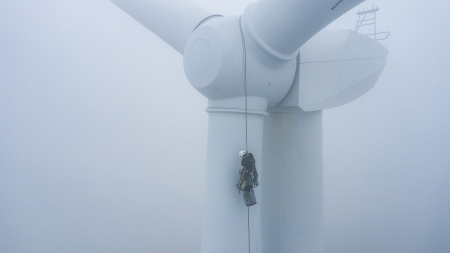The High Life
Rock-climber blade techs keep the wind turbines turning, with gusto.
All photos by Blake Gordon
Wind turbine technician sits at the top of the list for fastest-growing US jobs over the next decade (solar photovoltaic installer is third). With a median annual wage of $52,910 and projected growth of 61 percent, the winds of change are blowing in favor of renewable energy.
Over the past 20 years, Santa Cruz, California-based Rope Partner has established itself as “the premier provider of rope access maintenance, inspection and performance enhancement services that require specialized access approaches.” Fear of heights is a deal-breaker for an “at-height” blade technician applicant, so it’s no surprise that many of Rope Partner’s employees come from a rock climbing background, cracked fingernails and all. But knowing the ropes is only the beginning; each technician must also complete the specialized WindCorps® training and certification program (Rope Partner also maintains certification and membership in all governing bodies overseeing the wind power industry).
’Twas a whirlwind journey for Rope Partner’s founder—after meeting a pair of German climbers on a climbing trip in Joshua Tree National Park in 1998, who introduced him to the niche rope access industry (they had just finished helping the artists Christo and Jeanne-Claude wrap the Reichstag in Berlin), to working in the European wind energy sector, to bringing his skills back to the US. The work of an at-height technician is always evolving, but one thing will never change: Safety first.
This story was first published in the Patagonia Spring 2021 journal.

Moore puts his rock climbing roots to work on the cutting edge of renewable energy—one of the fastest-growing US industries over the next decade. Rio Vista, California.
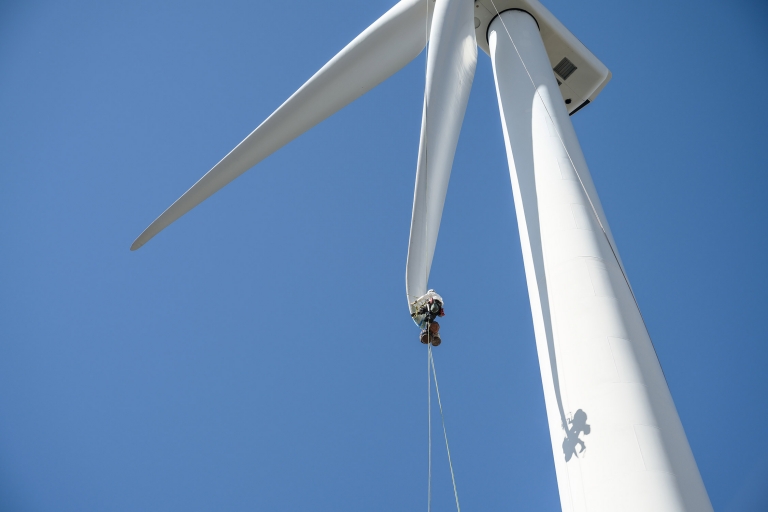
A day in the high life—Part 1: Arrive at tower and shut it down at the computer. First tech climbs internal tower via a ladder with fall-arrest cable, then runs a chain hoist from the top to haul up the rope bags. The blade is put into a downward position and the brake is set. Two large hydraulic pins are inserted into the rotor to lock in place, and a standard lock-out/tag-out procedure is followed (padlocks with tech’s name on the tag).
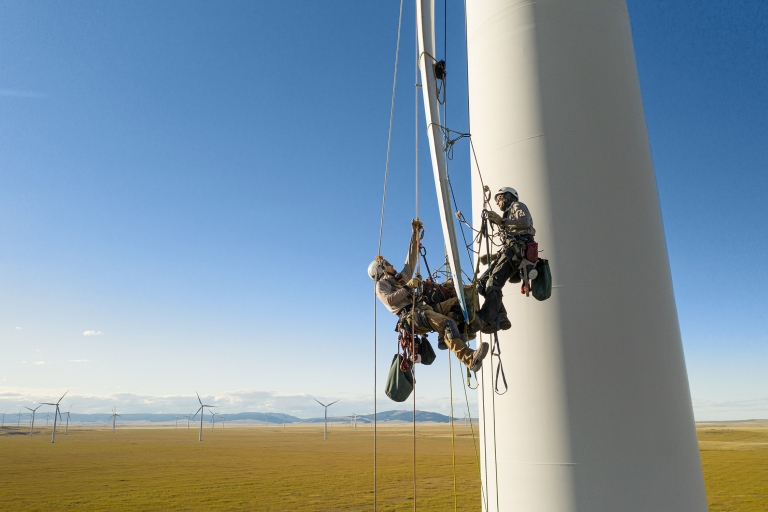
A day in the high life—Part 2: Rig a two-rope system tied off to lift points on the gearbox and frame, then lower ropes out over the nose cone. Descend the blade using a suction cup to get onto the leading edge. Tie a ring line around the blade to lock tech into position. Use a Pro Traxion pulley to haul up a work bucket containing grinder, sander, power cord and other tools. Repair the blade. Rope Partner tech Jason Davis (left) and Chris Moore hanging out on a wind turbine farm in Judith Gap, Montana.
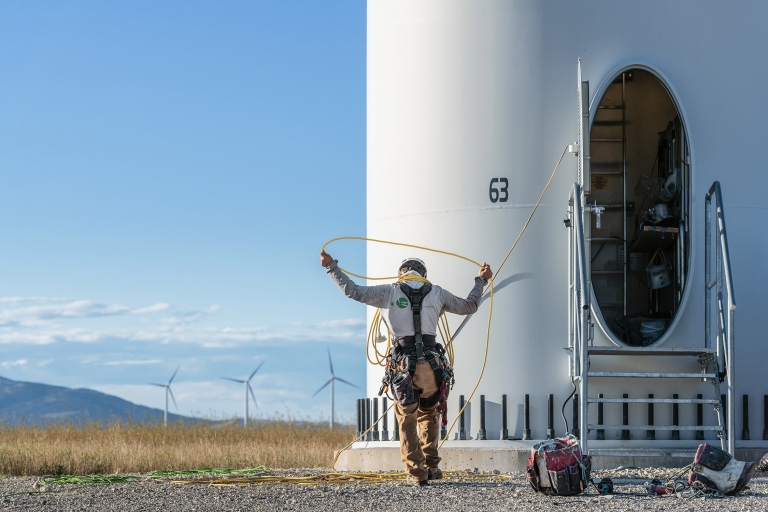
“Our bread and butter is composite repair work,” says Davis. “I worked as a sea kayak guide for several seasons and got some fiberglass repair experience fixing our boats out there on San Juan Island. Most of the gear we use would look familiar to anyone who climbs with ropes. Our hand ascenders are the same thing you’d use to jug while aiding, and our descenders are essentially just beefed-up Grigri’s with extra safety features.”
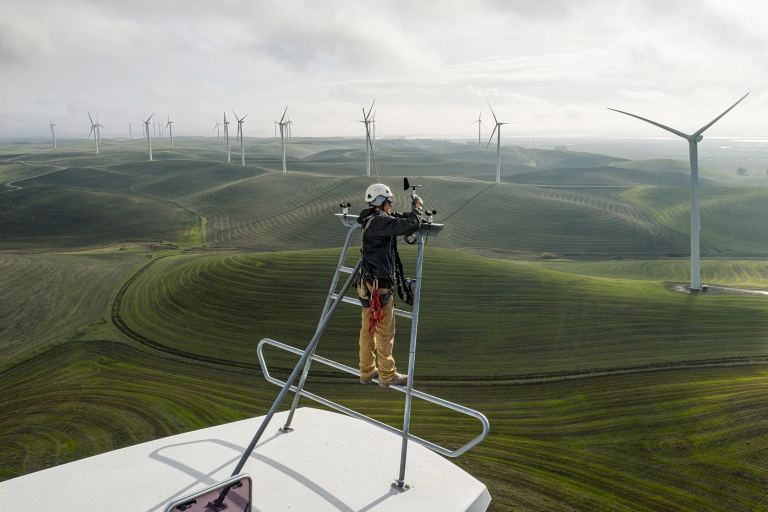
“I dropped out of college after a year and moved to Yosemite with no money or cares to become the most glorious thing a young man can be—a dirtbag,” recalls Moore. Climbing big walls turned out to be an education in some of the technical know-how that would serve him well in his future career. In 2009, he landed a job with Rope Partner. Five years later, he flew to Alaska for a climbing trip, went broke from all the bush flights and had to stay to find work. “I worked in mineral extraction for two summers operating a drill rig,” he says. “Slamming holes into some of the most beautiful mountains and sensitive watersheds.” Moore returned to Rope Partner and, today, is a senior supervisor and one of the top blade repair techs at the company. “There’s plenty of folks just like me here,” he says. “All right up that alley.” Rio Vista, California.
